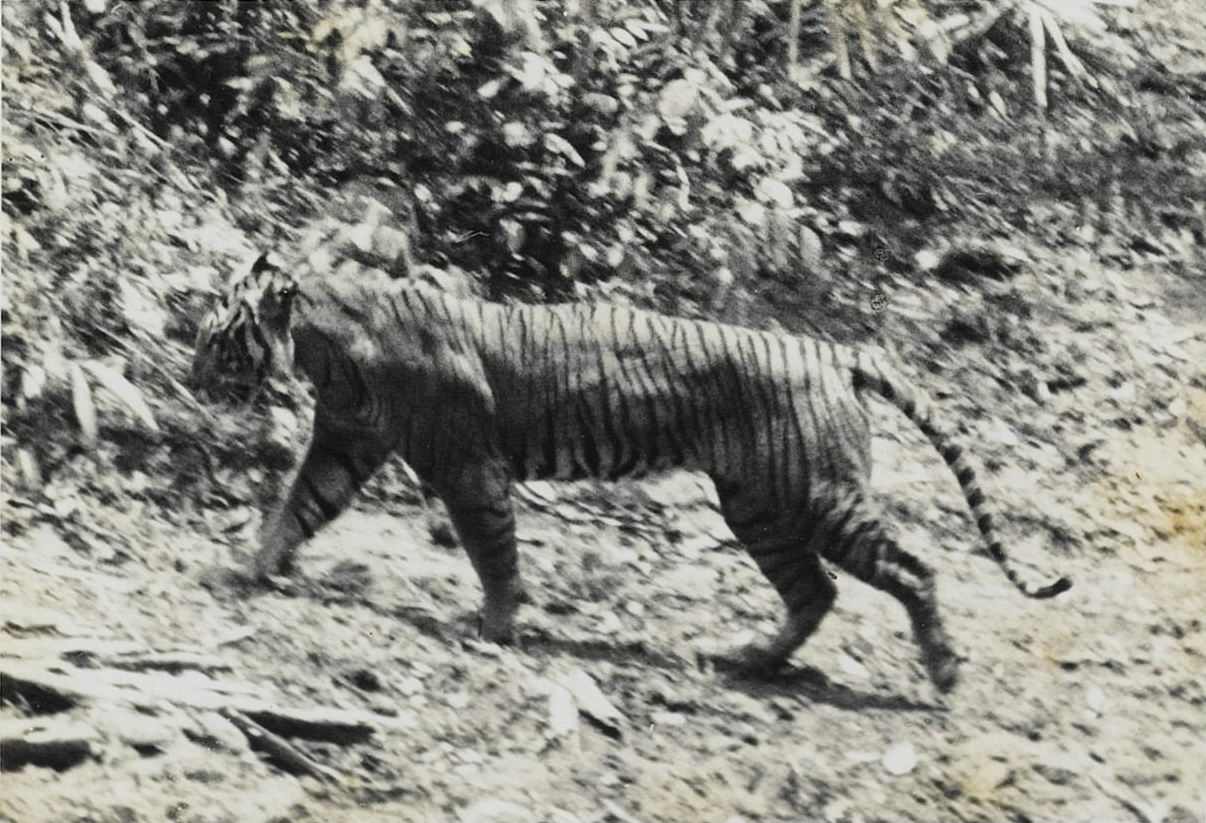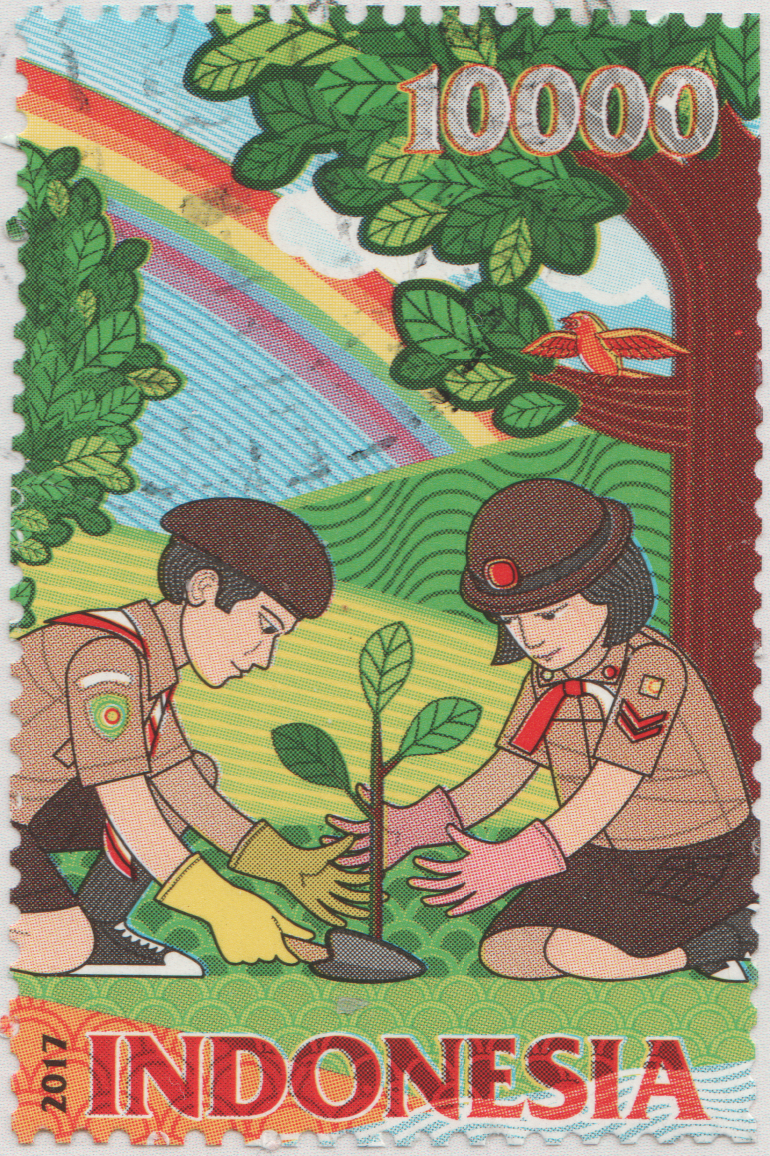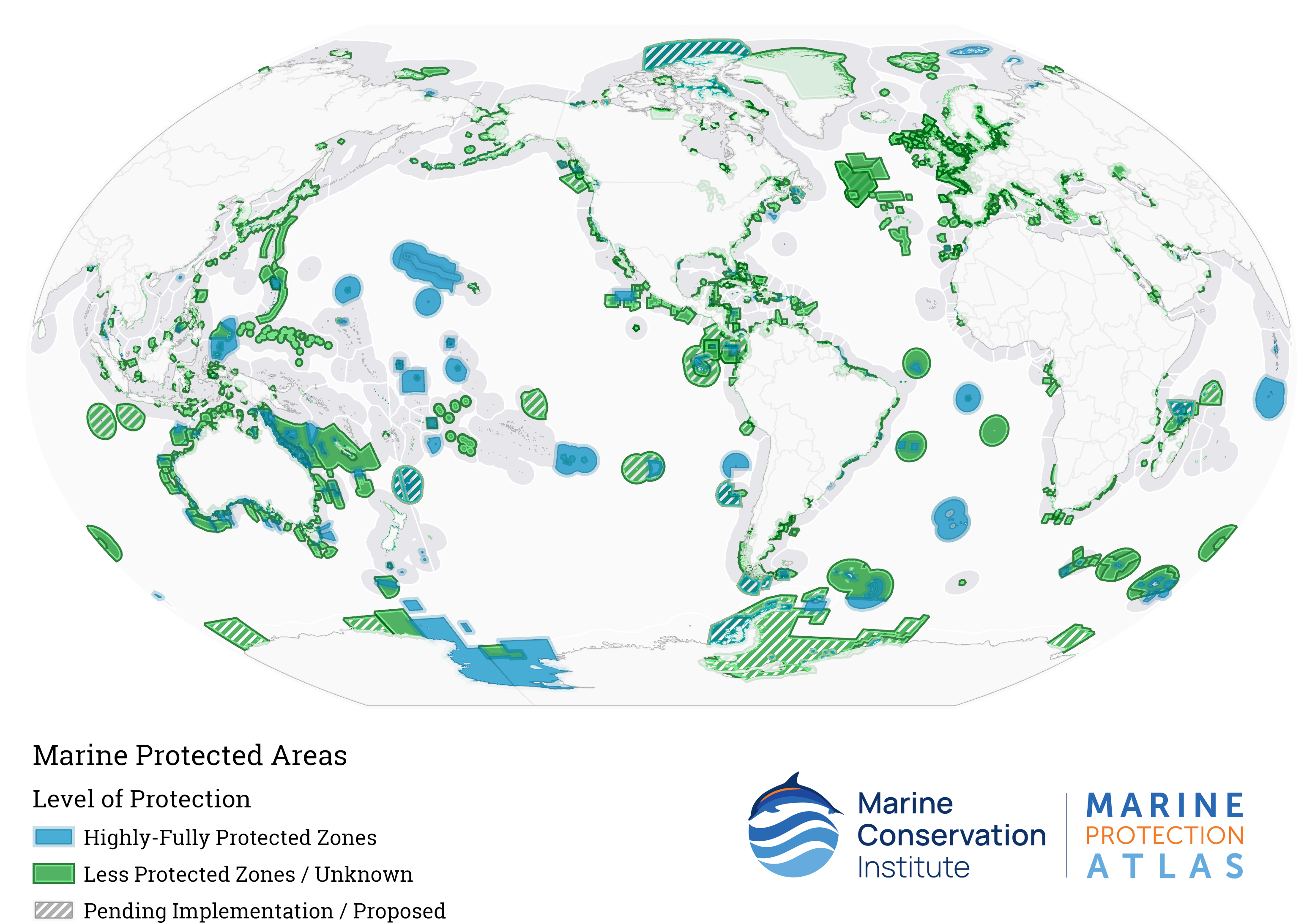|
Protected Areas Of Indonesia
Protected areas of Indonesia comprise both terrestrial and marine environments in any of the six World Commission on Protected Areas#IUCN Categories of Protected Area, IUCN Protected Area categories. There are over 500 protected areas in Indonesia, of which List of national parks of Indonesia, 57 National Parks and another nature and game reserves cover overall 36.1 million ha land area. The total protected land area represents over 18.9% of Indonesia's landmass.Marine Protected Areas comprise over 28.4 million ha (around 9% of Indonesian territorial waters). History In 1916 the colonial government of the Dutch East Indies introduced the Natural Monuments Ordinance, which led to the gazetting of 43 nature reserves in the following decade. The first two large reserves were Ujung Kulon (1921) protecting the Javan rhinoceros and Lorentz National Park, Lorentz (1923) protecting indigenous tribes. In 1932 a new legal framework for protected areas was established by the Ordinance on Natu ... [...More Info...] [...Related Items...] OR: [Wikipedia] [Google] [Baidu] |
World Commission On Protected Areas
The World Commission on Protected Areas (WCPA) is one of six commissions of the International Union for Conservation of Nature (IUCN). History In 1948, the IUCN established a Committee on National Parks. Two decades later the IUCN had been asked by the international community to take responsibility for preparing a world list of national parks in keeping with its role as a network to share the world’s knowledge on nature conservation, and in 1960, the IUCN raised the status of the Committee to that of a permanent Commission, with the creation of the Commission on National Parks. In 1996, the World Commission on Protected Areas took on its current name with the approval of the IUCN congress. Organizational structure WCPA is a network of volunteers. Secretariat support is provided by staff of the IUCN Programme on Protected Areas, with whom WCPA implements a shared strategic plan and work plan. The Commission has a Steering Committee, and the Chair is elected every four yea ... [...More Info...] [...Related Items...] OR: [Wikipedia] [Google] [Baidu] |
Isau-Isau Wildlife Reserve
Isau-Isau Wildlife Reserve is a nature reserve in South Sumatra, Indonesia. It is home to a large number of species, many of which are threatened or endangered. Formerly protected as Isau-Isau Pasemah Nature Reserve since 1978, the modern Wildlife Reserve was founded in 2014 and is managed by the Natural Resources Conservation Agency (BKSDA) of South Sumatra Province. The reserve is listed as IUCN Management Category IV. Geography Isau-Isau is one of South Sumatra's largest nature reserves, at . It spans across the regions of Kabupaten Lahat and Kabupaten Muara Enim. The reserve is isolated from other protected areas due to human presence. There are 24 villages in and around the reserve, including Lawang Agung, Pagar Agung, and Tanah Abang. These villages engage in agricultural practices such as coffee and rubber plantations. Climate The reserve ranges between approximately in elevation. Temperature and humidity vary based on elevation and forest canopy cover. In old-grow ... [...More Info...] [...Related Items...] OR: [Wikipedia] [Google] [Baidu] |
Indonesia Geography-related Lists
Indonesia, officially the Republic of Indonesia, is a country in Southeast Asia and Oceania, between the Indian and Pacific oceans. Comprising over 17,000 islands, including Sumatra, Java, Sulawesi, and parts of Borneo and New Guinea, Indonesia is the world's largest archipelagic state and the 14th-largest country by area, at . With over 280 million people, Indonesia is the world's fourth-most-populous country and the most populous Muslim-majority country. Java, the world's most populous island, is home to more than half of the country's population. Indonesia operates as a presidential republic with an elected legislature and consists of 38 provinces, nine of which have special autonomous status. Jakarta, the largest city, is the world's second-most-populous urban area. Indonesia shares land borders with Papua New Guinea, Timor-Leste, and the eastern part of Malaysia, as well as maritime borders with Singapore, Peninsular Malaysia, Vietnam, Thailand, the Philippines ... [...More Info...] [...Related Items...] OR: [Wikipedia] [Google] [Baidu] |
Protected Areas Of Indonesia
Protected areas of Indonesia comprise both terrestrial and marine environments in any of the six World Commission on Protected Areas#IUCN Categories of Protected Area, IUCN Protected Area categories. There are over 500 protected areas in Indonesia, of which List of national parks of Indonesia, 57 National Parks and another nature and game reserves cover overall 36.1 million ha land area. The total protected land area represents over 18.9% of Indonesia's landmass.Marine Protected Areas comprise over 28.4 million ha (around 9% of Indonesian territorial waters). History In 1916 the colonial government of the Dutch East Indies introduced the Natural Monuments Ordinance, which led to the gazetting of 43 nature reserves in the following decade. The first two large reserves were Ujung Kulon (1921) protecting the Javan rhinoceros and Lorentz National Park, Lorentz (1923) protecting indigenous tribes. In 1932 a new legal framework for protected areas was established by the Ordinance on Natu ... [...More Info...] [...Related Items...] OR: [Wikipedia] [Google] [Baidu] |
Heart Of Borneo
The Heart of Borneo is a conservation agreement initiated by the World Wide Fund for Nature to protect a 220,000 km² forested region on Borneo island. The agreement was signed by the governments of Brunei, Indonesia and Malaysia in Bali on 12 February 2007 to support the initiative. The region provides habitat to 10 endemic species of primates, more than 350 birds, 150 reptiles and amphibians and 10,000 plants. From 2007 to 2010 a total of 123 new species have been recorded in the region. A status report from 2012 found that the lowland rain forest within the area is deteriorating and under threat. The Bornean rhinoceros was the most threatened fauna, in 2015 three captive individuals remained in Sabah Sabah () is a States and federal territories of Malaysia, state of Malaysia located in northern Borneo, in the region of East Malaysia. Sabah has land borders with the Malaysian state of Sarawak to the southwest and Indonesia's North Kalima .... Protected areas The ... [...More Info...] [...Related Items...] OR: [Wikipedia] [Google] [Baidu] |
Environmental Issues In Indonesia
Environmental issues in Indonesia are associated with the country's high population density and rapid industrialisation, and they are often given a lower priority due to high poverty levels, and an under-resourced governance. Most large palm oil plantations in Indonesia owned by Singaporean rich conglomerates who employ thousands of local native Indonesians. Issues include large-scale deforestation (much of it illegal) and related wildfires causing heavy smog over parts of western Indonesia, Malaysia and Singapore; over-exploitation of marine resources; and environmental problems associated with rapid urbanisation and economic development, including air pollution, traffic congestion, garbage management, and reliable water and waste water services. Deforestation and the destruction of peatlands make Indonesia the world's third largest emitter of greenhouse gases. Habitat destruction threatens the survival of indigenous and endemic species, including 140 species of mammals id ... [...More Info...] [...Related Items...] OR: [Wikipedia] [Google] [Baidu] |
Conservation In Indonesia
Conservation in Indonesia encompasses efforts to protect the country's unique environment and biodiversity. Indonesia harbours a high rate of endemism and is rich in tropical rainforest and coral reefs. Traditional forest garden practices have played a role in preserving biodiversity in Indonesia. Formal conservation efforts began in the 19th century during Dutch colonial rule. Following independence, Indonesian conservation has been implemented by the Indonesian government along with grassroots efforts from non-governmental organisations and the cooperation of religious leaders. Indonesia has gazetted 21.3% of its land and 9% of its maritime area as protected areas, with targets to increase these. Implementation of conservation in the country is hampered by deforestation and mining. History Research has suggested that traditional forest gardens cultivated by Dayak people in West Kalimantan had a similarly high number of tree species as natural forests, suggesting they hav ... [...More Info...] [...Related Items...] OR: [Wikipedia] [Google] [Baidu] |
Suranadi Nature Recreation Park
The Suranadi Nature Recreation Park is a nature park on the island of Lombok, West Nusa Tenggara in Indonesia Indonesia, officially the Republic of Indonesia, is a country in Southeast Asia and Oceania, between the Indian Ocean, Indian and Pacific Ocean, Pacific oceans. Comprising over List of islands of Indonesia, 17,000 islands, including Sumatra, .... It was established in 1976. This site is 0.52 km2 and is known for hiking. References Protected areas of Indonesia Protected areas established in 1976 {{Asia-protected-area-stub ... [...More Info...] [...Related Items...] OR: [Wikipedia] [Google] [Baidu] |
Gita Persada Butterfly Park
Gita Persada Butterfly Park () is a butterfly house in Bandar Lampung, Indonesia. It was founded in 1997 by Anshori Djausal and Herawati Soekardi in an effort to preserve and protect Sumatran butterfly species from extinction. Increasing environmental issues such as Deforestation in Indonesia prompted the founders to establish this park with the hope that it would serve as a model for butterfly conservation. The park is located at the southern tip of Sumatra at the foot of Mount Betung, at the elevation of about fifteen minutes from Bandar Lampung. The park, located in , has an area of . As of 2011, the park houses about 160 species of Sumatran butterflies. Some rare species protected by the Indonesian government that can be found in this park are ''Graphium agamemnon'' and ''Troides helena ''Troides helena'', the common birdwing, is a butterfly belonging to the family Papilionidae. It is often found in the wildlife trade due to its popularity with butterfly collectors. The b ... [...More Info...] [...Related Items...] OR: [Wikipedia] [Google] [Baidu] |
Sakti Wahyu Trenggono
Sakti Wahyu Trenggono (born 3 November 1962) is an Indonesian politician. he serves as Minister of Maritime Affairs and Fisheries in the Onward Indonesia Cabinet of President Joko Widodo. Early life and education Trenggono was graduated from Industrial Engineering Department of Bandung Institute of Technology in 1986 and Informatics Management Department of Bina Nusantara College of Informatics and Computer Management (now BINUS University) in 1988. He later graduated from Management Program of Bandung Institute of Technology and obtained his master's degree in 2006. In 2021, he enrolled to Public Policies Program of Bandung Institute of Technology for another master's degree and doctoral degree. Business Careers He started his career as programmer and system analyst of Federal Motor (now Astra Honda Motor) from 1986 to 1992. From his experiences as programmer and system analyst, he later transferred to Astra Group HQ as Manager of Management Information System, Business ... [...More Info...] [...Related Items...] OR: [Wikipedia] [Google] [Baidu] |
Marine Protected Areas
A marine protected area (MPA) is a protected area of the world's seas, oceans, estuary, estuaries or in the US, the Great Lakes. These marine areas can come in many forms ranging from wildlife refuges to research facilities. MPAs restrict human activity for a conservation purpose, typically to protect natural or cultural resources. Such marine resources are protected by local, state, territorial, native, regional, national, or international authorities and differ substantially among and between nations. This variation includes different limitations on development, fishing practices, fishing seasons and catch limits, moorings and bans on removing or disrupting marine life. MPAs can provide economic benefits by supporting the fishing industry through the revival of fish stocks, as well as job creation and other market benefits via ecotourism. The value of MPA to mobile species is unknown. There are a number of global examples of large marine conservation areas. The Papahānaumoku� ... [...More Info...] [...Related Items...] OR: [Wikipedia] [Google] [Baidu] |
Bunaken Marine Park
Bunaken is an island of 8 km2, part of the Bunaken National Marine Park. Bunaken is located at the northern tip of the island of Sulawesi, Indonesia. It belongs administratively to the municipality of Manado. Scuba diving attracts many visitors to the island. Bunaken National Park extends over an area of 890.65 km2 of which only 3% is terrestrial, including Bunaken Island, as well as the islands of Manado Tua, Mantehage, Nain and Siladen. The waters of Bunaken National Marine Park are up to 1,566 m deep in Manado Bay, with temperatures ranging between 27 and 29 °C. It has a high diversity of - corals, fish, echinoderms and sponges. Notably, 7 of the 8 species of giant clams that occur in the world, occur in Bunaken. It also claims to have seven times more genera of coral than Hawaii, and has more than 70% of all the known fish species of the Indo-Western Pacific. Oceanic currents may explain, in part, why Bunaken National Marine Park has such a high level of ... [...More Info...] [...Related Items...] OR: [Wikipedia] [Google] [Baidu] |






